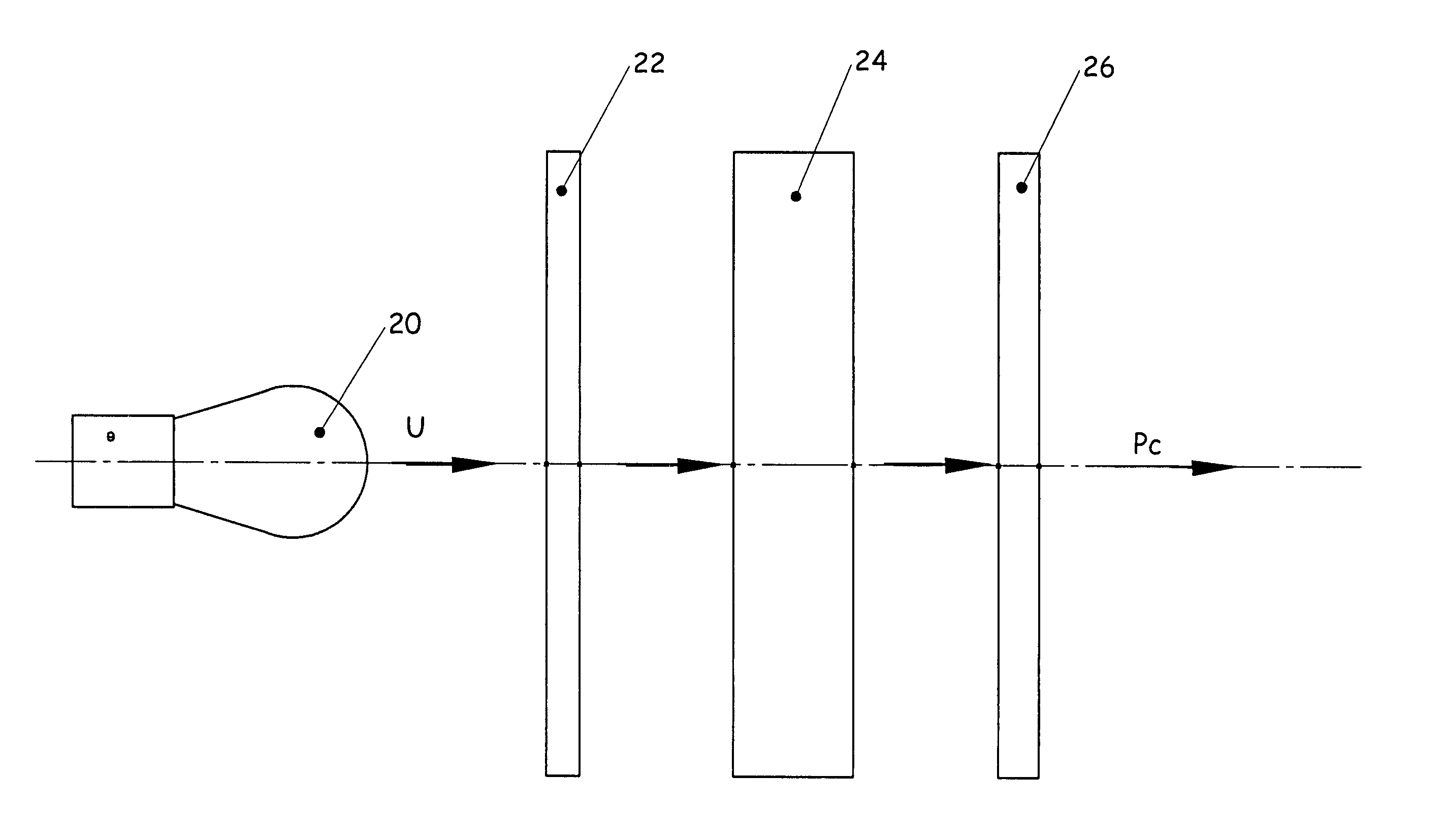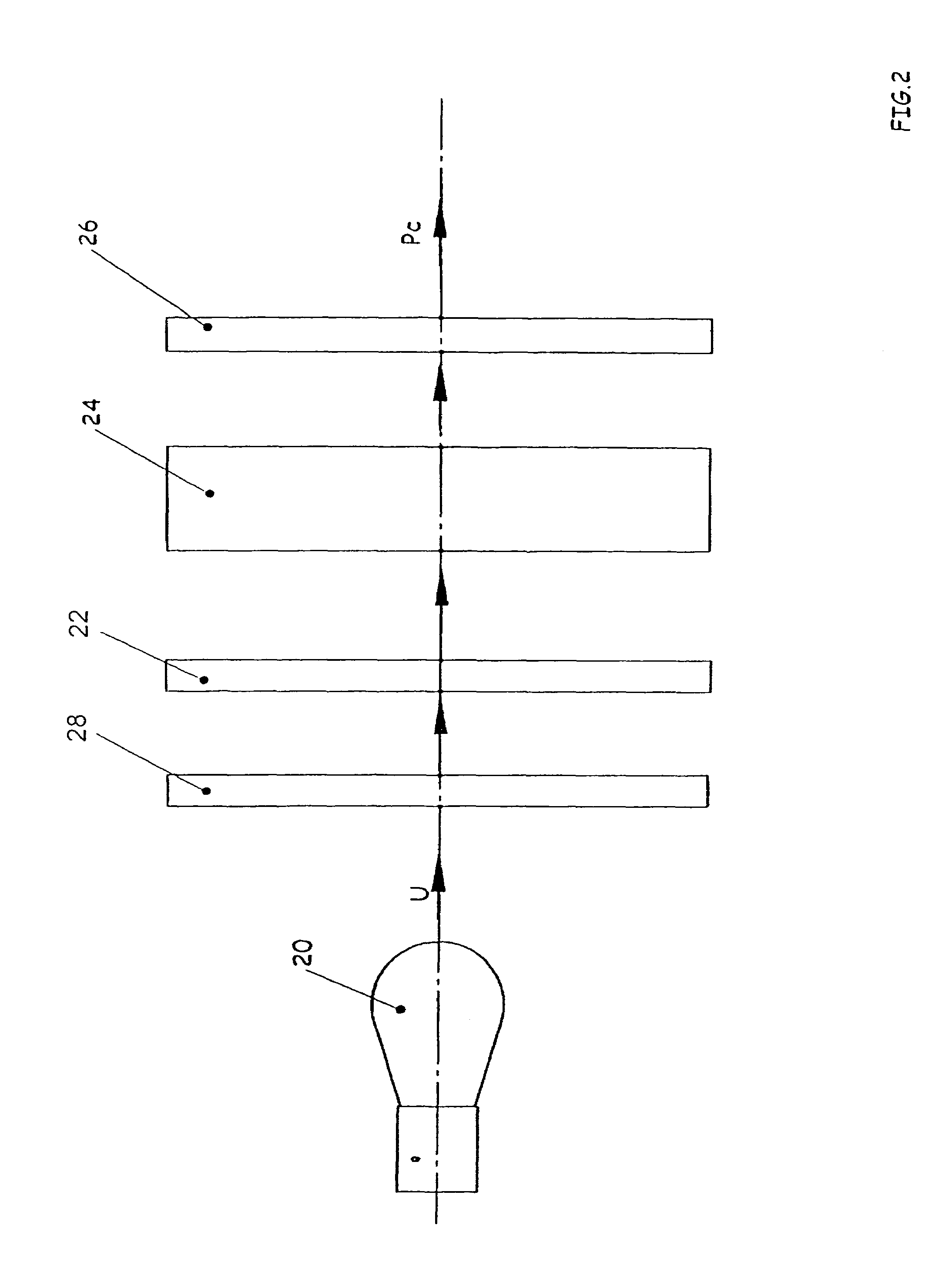Optically active color filter
a color filter and optically active technology, applied in the field of color filters, can solve the problems of affecting the quality of the filter, the mechanical system used to operate the roller is expensive and subject to breakdown, and the rotating roller device is only capable of producing a limited number of different colors
- Summary
- Abstract
- Description
- Claims
- Application Information
AI Technical Summary
Benefits of technology
Problems solved by technology
Method used
Image
Examples
Embodiment Construction
[0024]A diagram of an optically active color filter (hereafter, “color filter”) embodying features of the present invention is shown in FIG. 1. The path of light through the color filter is indicated by arrows. As used herein, the term “front” or “forward” refers to the side of the color filter or component thereof through which light exits while the term “rear”, “back” or “behind” refers to the side of the color filter or component thereof through which light enters. The color filter generally comprises a neutral, linear polarizer 22, an optically active device 24 and an adjustable, neutral, linear polarizer 26 (hereafter, “adjustable polarizer”). As used herein, the term “adjustable linear polarizer” or “adjustable polarizer” refers to a linear polarizer having a polarization axis whose angle of orientation vis-à-vis the axis of incoming light can be adjusted, e.g., mechanically or electrically. Preferably, the linear polarizer 22 is a fixed-position linear polarizer (hereafter, “...
PUM
 Login to View More
Login to View More Abstract
Description
Claims
Application Information
 Login to View More
Login to View More - R&D
- Intellectual Property
- Life Sciences
- Materials
- Tech Scout
- Unparalleled Data Quality
- Higher Quality Content
- 60% Fewer Hallucinations
Browse by: Latest US Patents, China's latest patents, Technical Efficacy Thesaurus, Application Domain, Technology Topic, Popular Technical Reports.
© 2025 PatSnap. All rights reserved.Legal|Privacy policy|Modern Slavery Act Transparency Statement|Sitemap|About US| Contact US: help@patsnap.com



